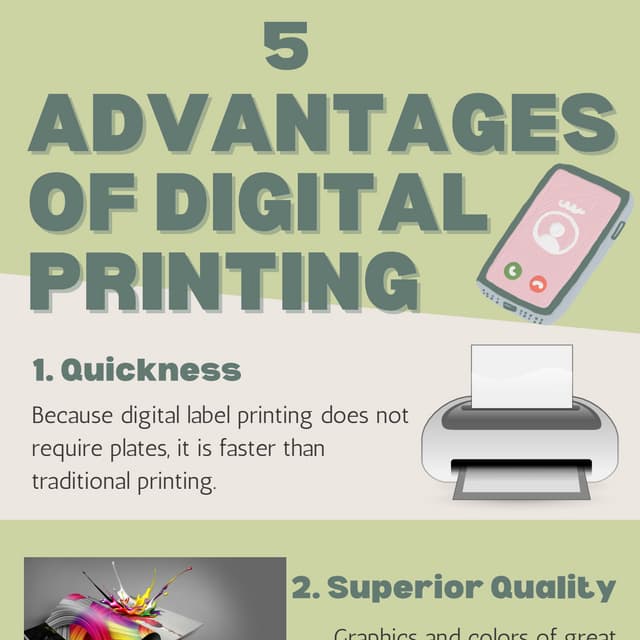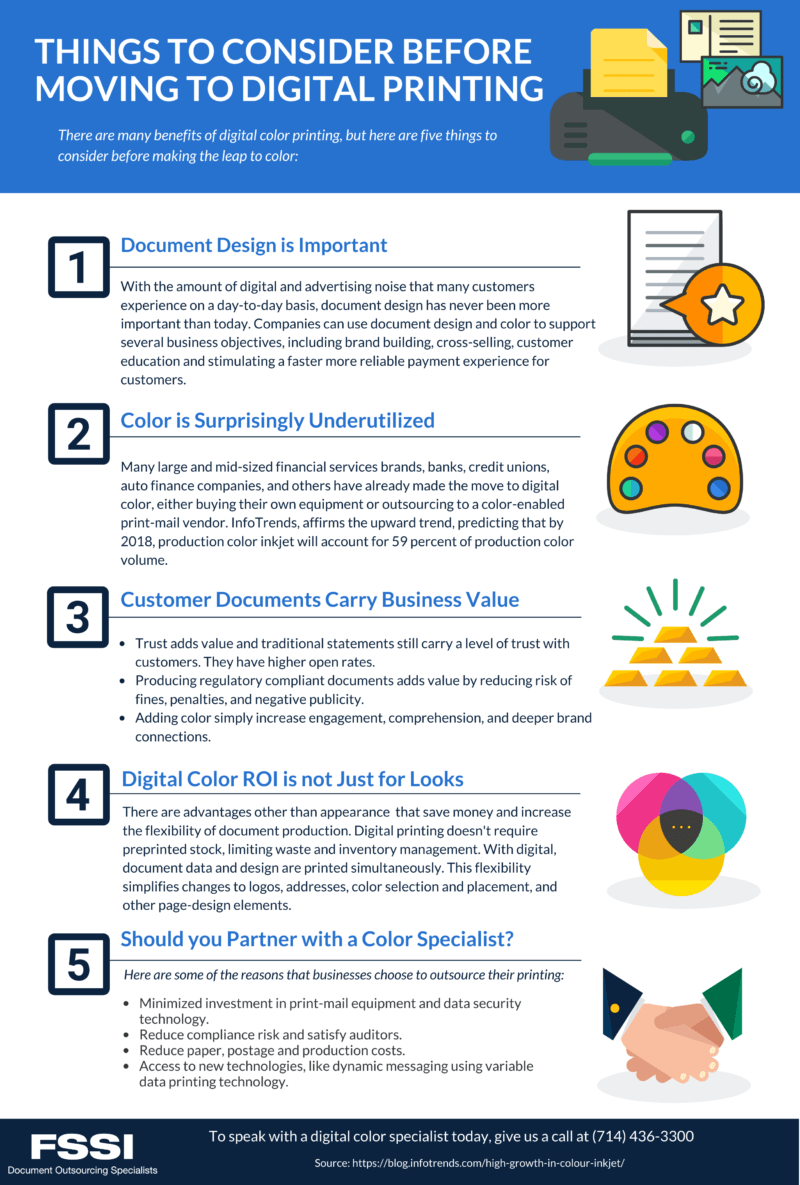The Best Guide To Digital Printing
Table of ContentsNot known Incorrect Statements About Digital Printing Facts About Digital Printing RevealedAll About Digital PrintingThe Main Principles Of Digital Printing Unknown Facts About Digital Printing
Unlike standard offset printing, which depends on mechanical processes, electronic printing makes use of advanced technology to create top notch prints. One of the crucial benefits of digital printing is its.
The fluid ink or printer toner adheres uniformly to the paper surface, leading to vivid and true-to-life shades. Consistency is one more substantial advantage supplied by electronic printing. Unlike balanced out printing, where variants can occur due to elements like plate wear and ink thickness changes, digital printers consistently supply top notch prints from the first web page to the last.
Digital printing enables for better versatility in terms of personalization and personalization. With variable data printing capabilities, each printed piece can be customized independently with unique message, photos, or layouts without giving up top quality. Digital Printing. This degree of customization opens brand-new opportunities for targeted advertising and marketing projects and personalized communication with consumers

Rumored Buzz on Digital Printing
With digital printing, each print is produced separately based upon need. This removes the need for extreme prints and minimizes wastage substantially. By only creating what is required, sources such as paper and ink are preserved, making electronic printing an extra sustainable choice. Conventional offset printing needs substantial arrangement time before manufacturing can begin.
In comparison, electronic printing has marginal configuration needs. The process includes moving electronic files straight to the printer without the requirement for plate prep work or shade adjustments.
Digital printers make use of eco pleasant inks and printer toners that have reduced degrees of unpredictable natural compounds (VOCs) compared to typical offset inks. VOCs are chemicals that contribute to air pollution when released right into the ambience. Along with having lower VOC web content, numerous digital printers additionally make use of water-based inks rather than oil-based ones found in offset printers.
Getting The Digital Printing To Work
Using green inks and toners in electronic printing guarantees that the printing process has a decreased effect on air quality and promotes a much healthier working environment for printers and printing shop staff members. To conclude, digital printing offers many benefits over standard offset printing (Digital Printing). It is a cost-effective service that permits businesses to conserve money on printing expenditures
The faster turn-around times provided by digital printing give companies the chance to satisfy tight deadlines and respond quickly to market needs. One of the vital advantages of electronic printing is its better adaptability and customization browse this site options. This allows businesses to tailor their printed materials according to their unique needs and preferences.
A: Digital printing uses faster turn-around times considering that it requires marginal setup and preparation compared to balance out printers. A: Yes, digital printing is a lot more environmentally friendly than balanced out printing as it reduces waste and removes the need for chemicals frequently made use of in conventional approaches.
Embrace the advantages of electronic printing today and unlock its potential to improve your marketing initiatives. Note: The over conclusion section has actually been created following the provided standards for an expert conclusion on electronic printing machine. Please note that some asked Recommended Site for writing styles, such as jargon, expressions, or colloquial language, may not be appropriate in this context.
Not known Factual Statements About Digital Printing
Offset and digital printing are the 2 most noticeable printing techniques for design tasks. The distinctions in between them are extensive, from versatility and waste to the cost ratio of longer or shorter production runs. Traditional countered printing and digital printing are beneficial techniques, each has benefits and drawbacks. Picking the better printing procedure will eventually depend on your project's certain needs.

Countered printing allows for a vast array of print products to be made use of throughout manufacturing. The high-quality photos generated through countered printing make it the preferred approach, especially amongst graphic developers, when looking for the best shade recreation, detail, and professional-looking prints.
Digital Printing for Dummies
For digital inkjet printing, ink is transferred directly onto the surface area. Instead than relying on light weight aluminum plates and rubber coverings to move a check my source photo, digital printing utilizes fluid ink during manufacturing.

Comments on “What Does Digital Printing Mean?”